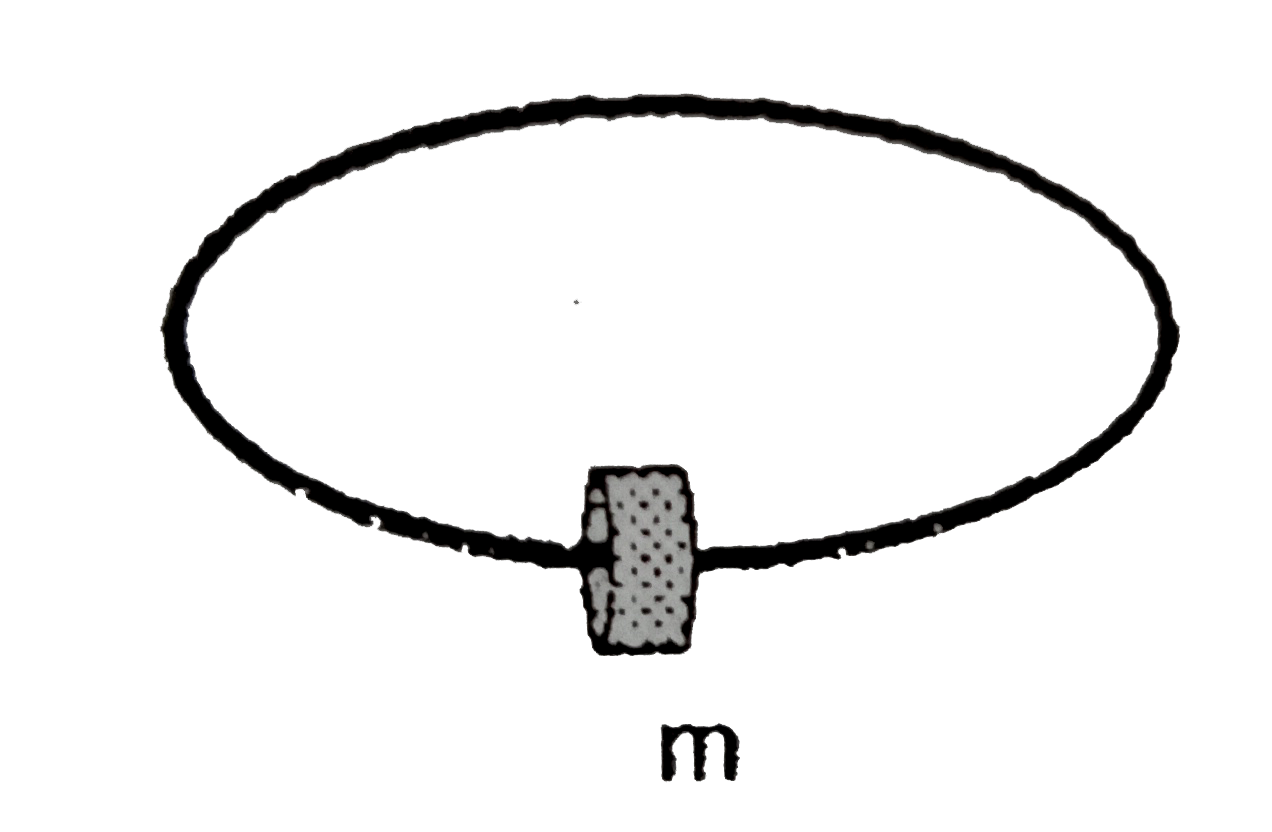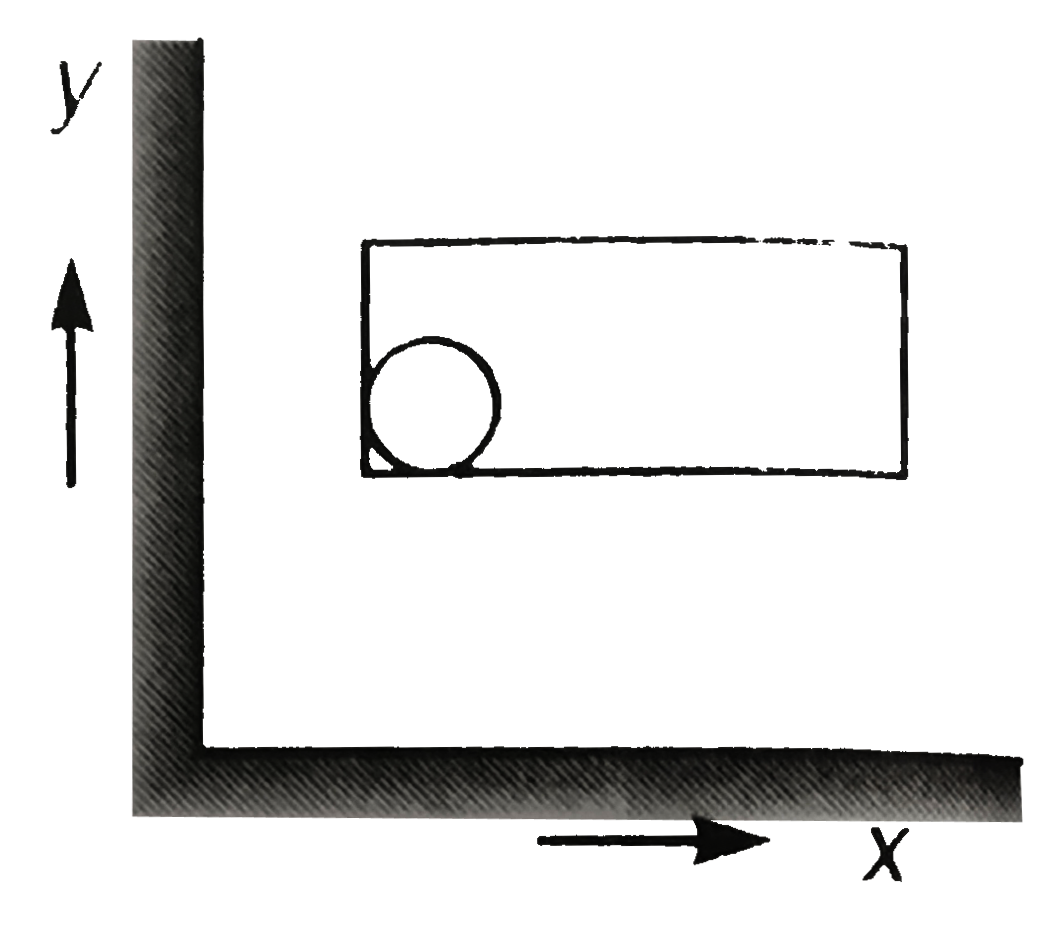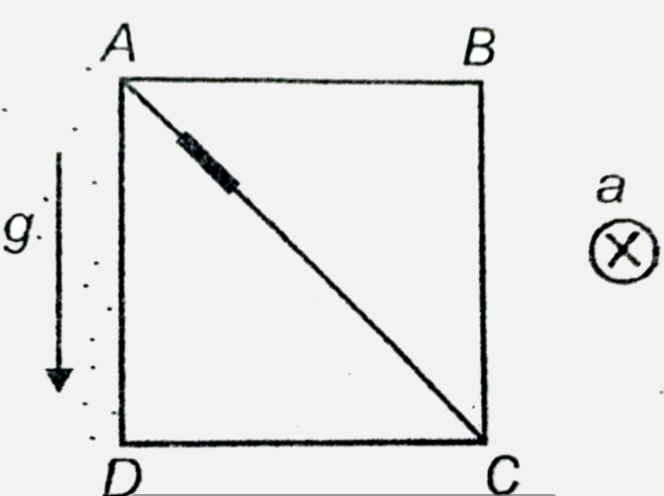Complete Solutions to ASSIGNMENT ( SECTION -J ) Aakash Challengers Questions of chapter LAWS OF MOTION of Class 12 book with complete answers and questions
| Class 12 | PHYSICS |
| Chapter | LAWS OF MOTION |
| AAKASH INSTITUTE | ASSIGNMENT ( SECTION -J ) Aakash Challengers Questions |
| Number Of Questions | 12 |
| Academic Year | 2023-24 |
The linear mass density , i.e mass per unit length of the rope as shown in figure , varies 0 to `lambda` from one end to another . The acceleration of the combined system of figure will be
View SolutionA uniform rope of length l and mass m lies on a smooth horizontal table with its length perpendicular to the edge of the table and a small part of the rope having over the edge. The rope starts sliding from rest under the weight of the over hanging end. The velocity of the rope when the length of the hanging part is . x
View SolutionA block of mass `m` is revolving in a smooth horizontal plane with a constant speed v.If the radius of the circle path is R find the total contact force received by the block

View SolutionA block of mass 2 kg hangs by an inextensible light string that passes over smooth pulley Another mass 1 kg hangs from the other end of the string and is connected with a vertical massless spring . The system is stationary. Just after the string is cut, the acceleraion of 1 kg and 2 kg are respectively . Given that `g = 10 m//s^(2)`

View SolutionA particle P is moving on a circle under the action of only one force acting always fixed point O on the circumference . Find ratio of ` (d^(2)phi)/(dt^(2)) and ((d phi)/dt)`

View SolutionChoose the correct option:
A small collar of mass `m` is given an initial velocity of magnitude `v_(0)` on the horizontal circular track fabricated from a slender rod. If the coefficient of kinetic friction is `mu_(K)`, determine the distance traveled before the collar comes to rest. (Recognize that the friction force depends on the net normal force).

View SolutionA unifrom flexible chain of length `3/2` m rests on a fixed smooth sphere of radius `R= 2/pi` m such that one end A of chain is on the top of the sphere while the other end B is hanging freely. Chain is helpd stationary by a horizontal thread PA as shown . Calculate the acceleration of chain when the horizontal string PA is burnt ( g = 10 `m//s^(2))`
View SolutionA long plank begins to move at `t=0` and accelerates along a straight track wit a speed given by `v=2t^(2)` for `0le t le 2` (where `v` is in m/s and `t` is in second). After 2 sec the plane continues to move at the constant speed acquired. A small initially at rest on the plank begins to slip at `t=1` sec and stops sliding at `t=3` sec. If the coefficient of static friction and kinetic friction between the plank and the block is `0.s` and `0.k` (where `s` and `k` are digits) respectively, find `s+k` (take `g=10m//s^(2)`)
View SolutionA sphere of mass `1 kg` rests at one corner of a cube. The cube is moved with a velocity `v =(8 t hat(i) - 2t^(2)) hat(j)`, where `t` is time in second . The force by sphere on the cube at `t = 1 s` is `(g = 10 m//s^(-2))` [figure shown vertical plane of the cube]

View SolutionA uniform chain of mass M and length L is hanging from the table. The chain is in limiting equilibrium when l length of chain over hangs . It is slightly disturbed from this position. Find the speed just after it completely comes off the table.

View SolutionA rectangular wire frame ABCD is in vertical plane is moving with a constant acceleration a into the plane as shown . Direction of gravity is shown inn figure . A collar can move on wire AC of length l . Coefficient of friction between wire and collar is `mu`. Find
 ltbr.
(i) The .....
(i) maximum acceleration a so that collar does not slip on wire.
ltbr.
(i) The .....
(i) maximum acceleration a so that collar does not slip on wire.
(ii) The time taken by collar to reach C if acceleration is half the value calculated in part
View SolutionThe system is released from rest. All surface are smooth . Find the angle theta at which the acceleration of wedge is maximum. ( given .`M/m=1/2`)
View Solution
ASSIGNMENT ( SECTION -J ) Aakash Challengers Questions questions and complete solutions for chapter LAWS OF MOTION of AAKASH INSTITUTE ENGLISH of Class 12
All Exercises from AAKASH INSTITUTE Class 12 PHYSICS LAWS OF MOTION
- ASSIGNMENT ( SECTION -A)
- ASSIGNMENT ( SECTION -B) objective type questions (one option is correct)
- ASSIGNMENT ( SECTION -C) objective type questions (More than one options are correct)
- ASSIGNMENT ( SECTION -D) Linked Comprehension Type Question
- ASSIGNMENT ( SECTION -D) Linked Comprehension Type Question (Comprehension -I)
- ASSIGNMENT ( SECTION -D) Linked Comprehension Type Question (Comprehension -II) (Choose the correct answer :)
- ASSIGNMENT ( SECTION -D) Linked Comprehension Type Question (Comprehension -III) (Choose the correct answer :)
- ASSIGNMENT ( SECTION -D) Linked Comprehension Type Question (Comprehension -IV) (Choose the correct answer :)
- ASSIGNMENT ( SECTION -E) Assertion - Reason Type Questions
- ASSIGNMENT ( SECTION -F ) Matrix - Match Type Questions
- ASSIGNMENT ( SECTION -G ) Integer Answer Type Questions
- ASSIGNMENT ( SECTION -H ) Multiple True - False Type Questions (Identify the correct combination of true (T) and false (F) of the given three statements.)
- ASSIGNMENT ( SECTION -I ) Subjective Type Questions
- ASSIGNMENT ( SECTION -J ) Aakash Challengers Questions
- Assignment (SECTION-A)
- Assignment (SECTION-B)
- Assignment (SECTION-C)
- Assignment (SECTION-D) (Assertion-Reason Type Questions)
- Example
- EXAMPLES
- EXERCISE
- Illustration
- TRY YOURSELF